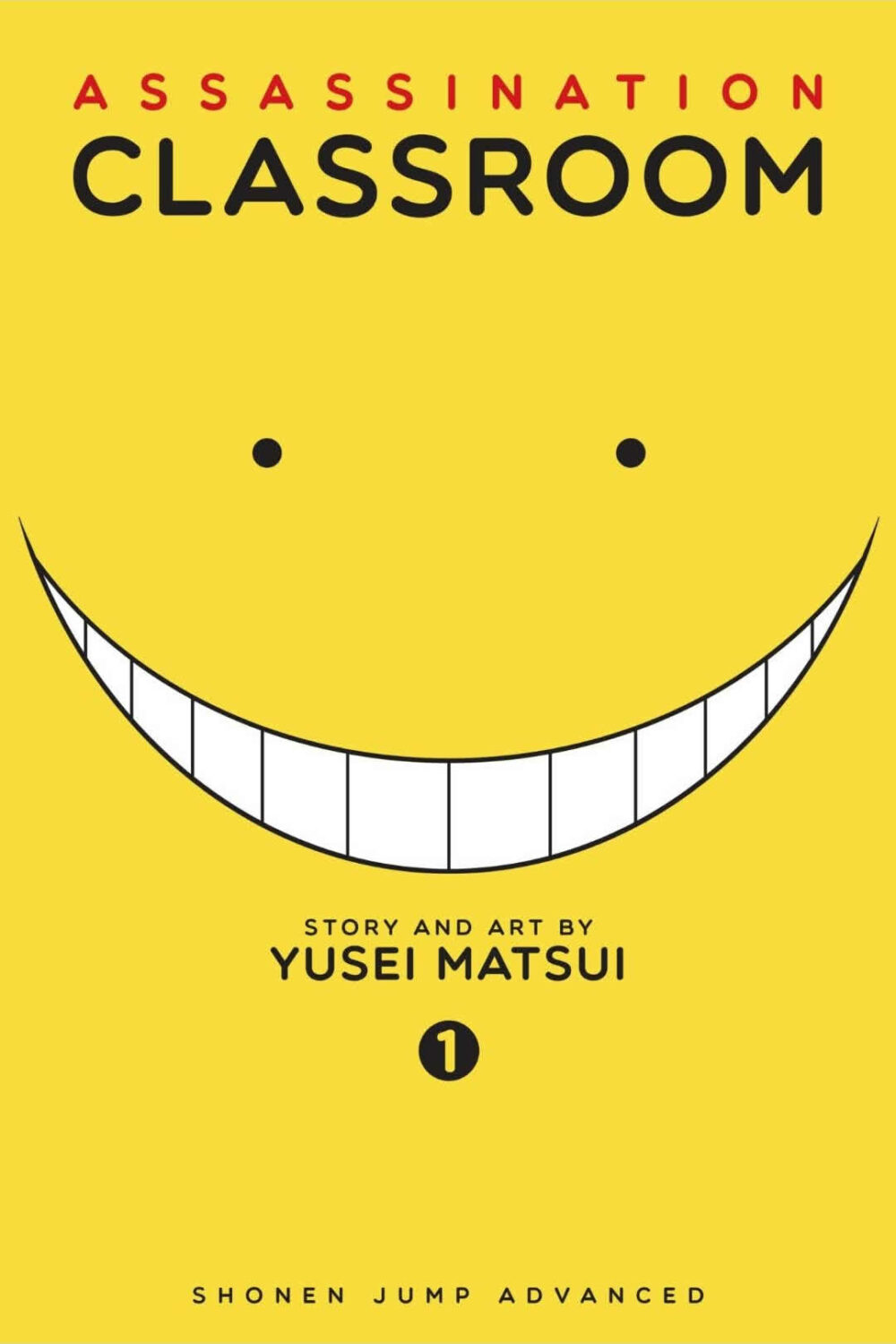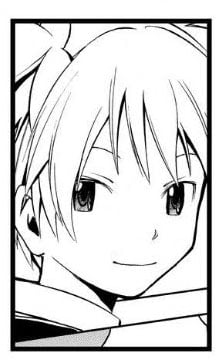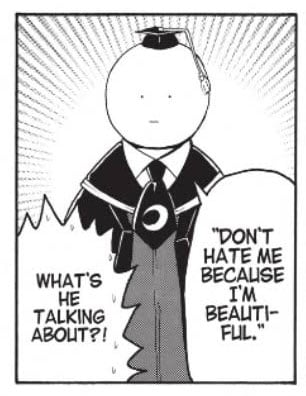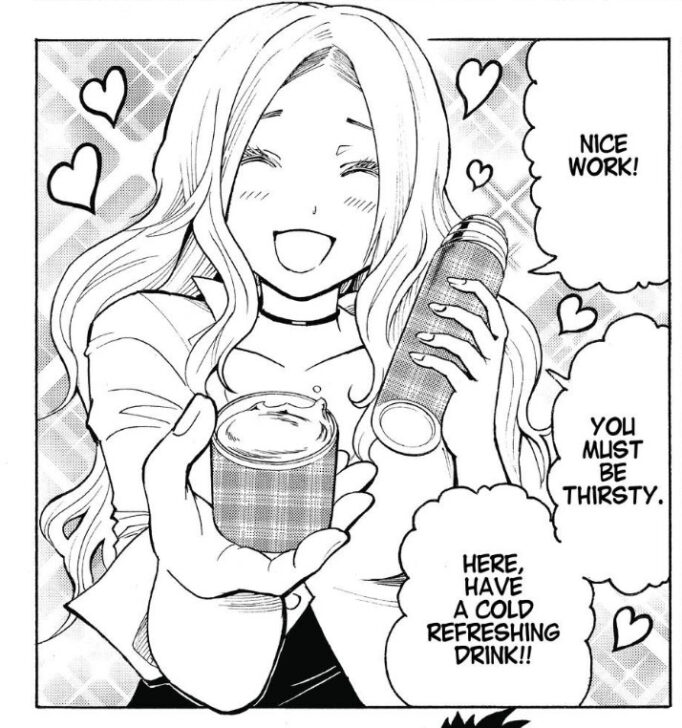Share on your favorite
Or copy the link
Below are navigation links that will take you to the main text and navigation menus.
26,551 first names, 70,620 last names, 333,585 kanji variations.
one of the best Japanese name search tools for your baby!

Image by:Assassination Classroom comic 1 © Yusei Matsui, SHUEISHA Inc.
Assassination Classroom is a Japanese science fiction comedy manga series written and illustrated by Yusei Matsui. The series was serialized on Shueisha’s Weekly Shonen Jump magazine from July 2012 to March 2016 and is licensed in English by Viz Media. The series follows the daily lives of an extremely powerful octopus-like being working as a junior high homeroom teacher and his students dedicated to the task of assassinating him to prevent the earth from being destroyed. The students are losers and rejects in their school and are taught in a separate building; the class he teaches is called 3-E (The “End Class”).
Contents
One day, suddenly a variant looking mysterious creature and an officer of the Ministry of Defense came to class 3-E where loser and reject students are gathered of Kunugigaoka junior high school. This dangerous creature that is able to fly at Mach 20, destroyed 70% of the Moon and left it permanently in the shape of a crescent claims “I will destroy the earth if you couldn’t manage to kill me by next March” and demands to be the classroom teacher of 3-E Kunugigaoka junior high school.
The government are confused but commission the 3-E students in the ‘Assassination of the mysterious creature’
Students were very confused at first yet they are motivated by the reward of 10 billion yen (i.e. 100 million USD). The creature = Koro-sensei (Korosensē) ‘s existence and purpose are only known by a very limited number of people such as leaders of each country. The students try to assassinate Koro-sensei in many ways under a lot of set rules such as “Do not disclose the existence of Koro-sensei or involving anyone in the assassination of him even your own family. If this information is leaked, they will have their memory deleted of the events, or “Koro-sensei must not harm 3-E students. However, their family and friends are ineligible.”
As much as they try to kill him, they are always stopped by Koro-sensei’s speed and unpredictable actions. Some times he even polished a student’s nail or repaired a fighter jet in return for their attempt at killing him.
In spite of the strangeness of this situation, such as assassins and the target, many of the students have enjoyed this assassination classroom and their school lives became more positive than what they used to be being part of the “abandoned worst classroom”. And at the same time, other assassins come after Koro-sensei’s life from all over the world…
“Assassination Classroom” is 「暗殺教室 Ansatsu-Kyoshitsu」in Japanese.
Assassination = 暗殺 Ansatsu
Classroom = 教室 Kyoshitsu
Title in English has been just simply translated from the Japanese title.
Assassination is 暗殺 and pronounces Ansatsu.
Classroom is 教室 and pronounces Kyoshitsu.
Image by: Assassination Classroom Comic vol.2 © Yusei Matsui, SHUEISHA Inc.
殺せないKorosenai unkillable -先生sensei teacher
It is a nickname named by one of 3-E student Kayano.

Image by: Assassination Classroom Comic vol.2 © Yusei Matsui, SHUEISHA Inc.
潮(shio) means “tide”. 田(ta) means “paddy field”.
渚(Nagisa) means “shore”.

Image by: Assassination Classroom Comic vol.2 © Yusei Matsui, SHUEISHA Inc.
赤羽(Akabane) means “Red Wing” and 業(Karuma) means “Karma”.
His parents love Indian styles and because of that, he was named after the idea of Hinduism and Buddhism.
In Japan, these names aren’t usual and are called ‘キラキラネーム Kira Kira name’ which means too weird from common sense.
He understands his name isn’t usual but it seems he likes his name.

Image by: Assassination Classroom Comic vol.2 © Yusei Matsui, SHUEISHA Inc.
茅野(Kayano) means “thatch filed”. カエデ(Kaede) means “maple” but in this story, this is her false name using role names from her actress career.
雪村(Yukimura) isn’t a common Japanese name.
雪(Yuki) means “snow” and 村(Mura) means “village”. あかり(Akari) means “light”.
It’s Japanese Hiragana and quite a common name for girls.

Image by: Assassination Classroom Comic vol.2 © Yusei Matsui, SHUEISHA Inc.
烏間(Karasuma) is a created family name. There is the same name read as Karasuma but kanji is different as 烏丸.
烏(Karasu) means crow. 間(Ma) means relation, pause, room, gap and more.
Tadaomi is a boy’s name. 惟(Tada) means “think”, “consider”.
臣(Omi) means “vassal”, “liege”.

Image by: Assassination Classroom Comic vol.1, episode1, page14 © Yusei Matsui, SHUEISHA Inc.
Souda is more accurate to write down but when you try to say it, prefer to pronounce Sohda would be more natural 😉
Although, In Japanese comic, it’s just agreements saying 「そうだ そうだ!」”Sohda Shoda!”.
In this case, repeating twice means strong agreement.

Image by: Assassination Classroom Comic vol.1 episode1, page16 © Yusei Matsui, SHUEISHA Inc.
Weird can translate as 変Hen as well. Kimyo is a more literary way to say.
Gotten used to (something) = (something) ni Nareta に慣れた。
It might be useful to say “I’ve gotten used to speaking in Japanese !” Nihongo日本語 deで Hanasu 話す kotoni 事に Nareta 慣れた! ;) Wish you could say it soon!

Image by: Assassination Classroom Comic vol.1, episode2, page77 © Yusei Matsui, SHUEISHA Inc.
Made a promise to someone = Darekani 誰かに Yakusoku-shita 約束した。
Became = Natta なった
”I made a promise to myself to keep studying Japanese.”
“Jibun-jishin to 自分自身と Nhongo-no日本語の Benkyo wo 勉強を tuzukeru to 続けると yakusoku shita 約束した”

Image by: Assassination Classroom Comic vol.1, episode4, page115 © Yusei Matsui, SHUEISHA Inc.
Obviously, this is useful for your daily life! If you want to say “It’s nice to meet you” in a more frank way, you can shorten the word as just “Yoroshiku よろしく.”
“Sorry I’m late” “Okurete Gomen-nasai 遅れてごめんなさい” is also useful when you’re late for a meeting with your friend! Don’t make your friend wait for you too long!

Image by: Assassination Classroom Comic vol.1, episode5, page137 © Yusei Matsui, SHUEISHA Inc.
”What’s wrong?” is the same meaning and translation as Douka-shimashitaka? どうかしましたか? Obviously, the situation is something wrong. You might say this when your friend or someone close to you looks down.

Image by: Assassination Classroom Comic vol.1, episode7, page166 © Yusei Matsui, SHUEISHA Inc.
Try = Tamesu 試す
Frank way, you can short the word as “Soh-nano?そうなの?” and “Tamesasete! 試させて!”

Image by: Assassination Classroom Comic vol.1, episode7, page170 © Yusei Matsui, SHUEISHA Inc.
Hate = Kirai 嫌い
Beautiful = Utsukushii 美しい
That’s the feeling of all readers as well! lol
Suddenly Koro-sensei lost his mind…
Or you can ask somebody in the same way when you join the middle of conversation 😉

Image by: Assassination Classroom Comic vol.2, episode8, page10 © Yusei Matsui, SHUEISHA Inc.
Japanese is short for the first phrase because it just makes sense as Hisashiburi.
Even in English, you often just say “Been a while!” right?
If you want to know “since I last saw you” in Japanese, it’s “Konomae この前Atte Kara(irai)会ってから(以来)”.
And Payday is important for everyone so as Koro-sensei!
Everybody desperate for a payday to come every month!
Huh? Is it just me???

Image by: Assassination Classroom Comic vol.2, episode8, page11 © Yusei Matsui, SHUEISHA Inc.
In disguise = Hensou 変装
It’s worth it! = Kachi-ga-aru 価値がある
Not sure how much use the word “in disguise” in your daily life “but it’s worth learning it in Japanese!” ;P

Image by: Assassination Classroom Comic vol.2, episode8, page13 © Yusei Matsui, SHUEISHA Inc.
“I owe you one” = Kariga dekita借りができた
The second phrase, “I’ll never forget what you’ve done for me” translation is her way to say as in a bit of exaggerated expression. When you feel so and still want to express this feeling, it’s more natural if you say “Anataga あなたがsitekuretaしてくれた kotowa ことはzettaini絶対に wasuremasen忘れません”.
Want to use this phrase to show your great appreciation for someone you owe!

Image by: Assassination Classroom Comic vol.2, episode8, page17 © Yusei Matsui, SHUEISHA Inc.
Fool somebody = Dareka(wo) 誰か(を)Damasu 騙す
Fool also means Karakau からかう. This means more joking somebody.
I wouldn’t recommend you fool someone!

Image by: Assassination Classroom Comic vol.2, episode8, page21 © Yusei Matsui, SHUEISHA Inc.
Do you want to ask somebody a favor? Then use this phrase but you might need to change “Aruno” to “Arimasu”. In this case, it’s a female way to say and it’s a little bit frank way. If you need, change that and it’s a polite way. It might be a better way to say as it’s a favor 🙂
“Piece of cake” is in Japanese is a bit old generation type to say so as “Piece of cake”.
However people still use them, right? Just for something easy to do.

Image by: Assassination Classroom Comic vol.4, episode26, page16 © Yusei Matsui, SHUEISHA Inc.
”Otsukare sama” is very useful. Use this phrase when you see someone finish their job, school and was something working on. In a polite way, “Otsukare sama deshita” would be preferable. Frank way, when you want to say to your colleague or friend, you can short the word as “Otsukare”!
When you want to say “I’m thirsty”, it’s “Nodoga Kawaita.喉が乾いた。”
Cold = Tsumetai 冷たい
Refreshing drink = Nomimono 飲み物 (In this case don’t have to say refreshing in Japanese. combined as just a drink.)

Image by: Assassination Classroom Comic vol.4, episode26, page18 © Yusei Matsui, SHUEISHA Inc.
Piggy back ride = Onbu おんぶ

Image by: Assassination Classroom Comic vol.1, episode3, page97 © Yusei Matsui, SHUEISHA Inc.
Unfair = Fukohei 不公平, Futoh 不当
”Zurui” is also “cheating”. What he does isn’t fair in this scene so it’s cheating is the same way to say.
Sort by: Most Kanji Variations
Sorts names by how many different kanji spellings they have. In general, names with more variants tend to be more familiar and widespread in Japan (with some exceptions).
Sort by: Most Viewed
Sorts names by page views on this site. Views reflect global traffic (including Japan), so this does not represent popularity among Japanese people only. A high view count does not necessarily mean the name is famous in Japan.
What is Hiragana?
Hiragana is one of the two Japanese syllabaries. Each character represents a sound (mora), not a meaning. It is used for native words, grammatical particles, verb/adjective endings (okurigana), and to show pronunciation above kanji (furigana). It developed from cursive forms of kanji.
What is Katakana?
Katakana is one of the two Japanese syllabaries. Each character represents a sound (mora), not a meaning. It is mainly used to write foreign words and names, loanwords, onomatopoeia, and for emphasis.
What are English Syllables?
A syllable is a unit of pronunciation in English — it’s the beat you hear when you say a word.
Here are a few quick examples:
cat = 1 syllable
ba-by = 2 syllables
beau-ti-ful = 3 syllables
On this site, English Syllables show how a name naturally breaks into sounds when spoken in English. This helps you understand how English speakers naturally say the name and where they pause between sounds.
What are Japanese Morae?
A mora (plural: morae, Japanese: 拍 Haku) is the basic unit of sound in Japanese — think of it as one rhythmic “beat” when speaking.
Here are a few quick examples:
あ (a) = 1 mora
あい (a-i) = 2 morae
きょう (kyo-u) = 2 morae
On this site, Japanese Morae show how many “beats” a name has in Japanese. Most Japanese names have about 2–4 morae, which affects how natural and rhythmic the name sounds to native speakers.
This helps you see how the name fits into the natural rhythm of Japanese speech.
What is English Transcription?
“English transcription” (romanization) is the romanized form of a Japanese name, intended to reproduce its pronunciation as closely as possible. It is also useful for searching names on this site.
Japanese-Style Nicknames
In Japan, nicknames are used to express familiarity and affection. Typical features include:
Shortened forms: Names are often shortened for closeness, e.g., “Yuki” from “Yukiko” or “Taka” from “Takashi”.
Suffixes: Terms like “-chan” (often for girls, also for young children) and “-kun” (often for boys) are used among family and close friends. Among very close adults, “-chan” may still be used. More details
Use & context: Nicknames are informal—common among friends, family, or close colleagues—and are not suitable for formal or professional settings. Their use implies a certain degree of intimacy.
Long vowels: The long vowel mark “chōonpu” (ー) extends the preceding vowel. For example, “あーちゃん” (A-chan) lengthens the “あ” sound.
Households
Sorts surnames by the estimated number of Japanese households that use them. More households generally indicates a more common or well-known surname.
About our last-name data
